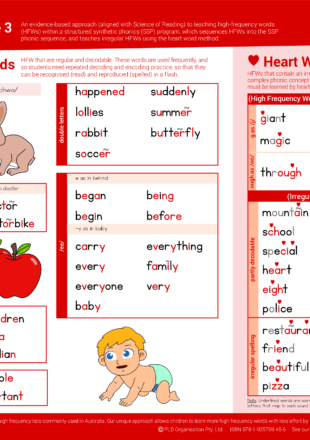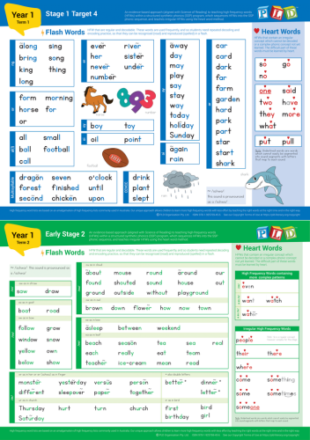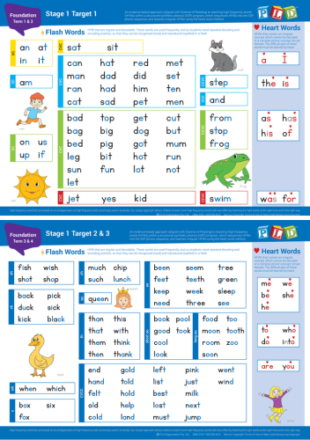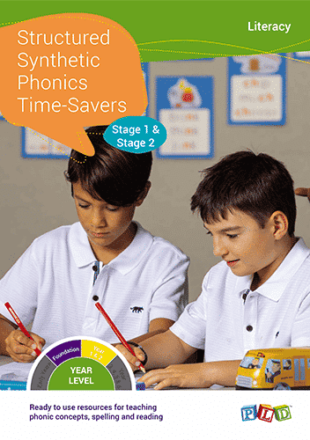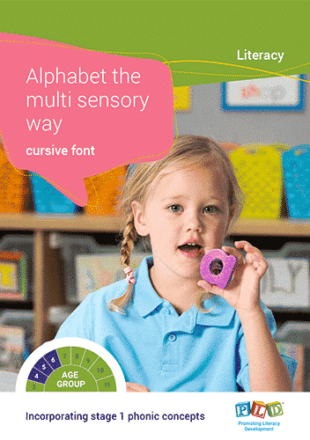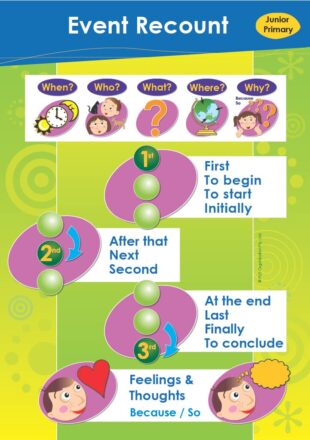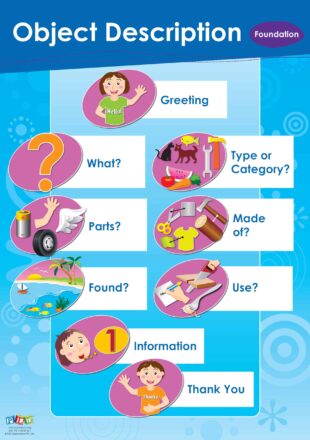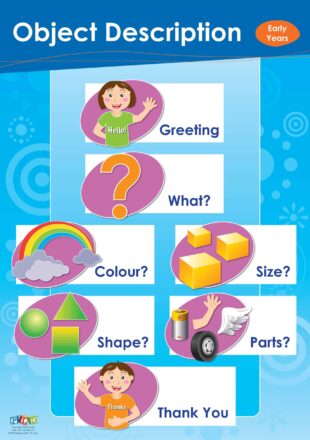Age
Showing 225–240 of 459 results
-
Foundation – Semester 2 – Storage & Organisation Labels for Decodable Reading Books
To be assigned to reading books from PLD reading book series and other compatible decodable series. The application of labels to the spines of each home and targeted home reading book is recommended as the labels highlight the reading book levels and their content. Applying the Label Cut along the dotted line. Apply the label to […]
To be assigned to reading books from PLD reading book series and other compatible decodable series. The application of labels to the spines of each home
-
Tips for Dealing with Letter Reversals
Reversing Letters in Early Years, Foundation and early Year 1
Many young children reverse letters because they lack familiarity with the symbols. When learning to write letters in the Early Years, Foundation and early Year
-
From Year 3 – Phonics & High Frequency Words
Following an extensive literature review, PLD has upgraded our approach to high frequency words (HFW). In a recent blog, a range of tips were provided to remove the confusion that surrounds sight words. Since that point, we have developed our approach further. Our 2020 approach to HFW tackles three commonly encountered issues: Teaching HFW in […]
Following an extensive literature review, PLD has upgraded our approach to high frequency words (HFW). In a recent blog, a range of tips were provided
-
Year 2 – Phonics & High Frequency Words
Following an extensive literature review, PLD has upgraded our approach to high frequency words (HFW). In a recent blog, a range of tips were provided to remove the confusion that surrounds sight words. Since that point, we have developed our approach further. Our 2020 approach to HFW tackles three commonly encountered issues: Teaching HFW in […]
Following an extensive literature review, PLD has upgraded our approach to high frequency words (HFW). In a recent blog, a range of tips were provided
-
Year 1 – Phonics & High Frequency Words
Following an extensive literature review, PLD has upgraded our approach to high frequency words (HFW). In a recent blog, a range of tips were provided to remove the confusion that surrounds sight words. Since that point, we have developed our approach further. Our 2020 approach to HFW tackles three commonly encountered issues: Teaching HFW in […]
Following an extensive literature review, PLD has upgraded our approach to high frequency words (HFW). In a recent blog, a range of tips were provided
-
Foundation – Phonics & High Frequency Words
Following an extensive literature review, PLD has upgraded our approach to high frequency words (HFW). In a recent blog, a range of tips were provided to remove the confusion that surrounds sight words. Since that point, we have developed our approach further. Our 2020 approach to HFW tackles three commonly encountered issues: Teaching HFW in […]
Following an extensive literature review, PLD has upgraded our approach to high frequency words (HFW). In a recent blog, a range of tips were provided
-
Structured Synthetic Phonics Time-Savers – Stage 1 & 2
Ready to use resources for teaching phonic concepts, spelling and reading.
The Structured Synthetic Phonics Time-Savers for Stage 1 & Stage 2 program is designed to save time, simplify planning and to support educators in delivering impactful phonics lessons with ease. Aligned with the Phonic and Sight Word Sequence, the program includes resources that simplify lesson planning while delivering high-quality phonics instruction. The program is designed to support spelling and reading development through explicit instruction, practise and revision, ensuring that students achieve success in early literacy. Program Includes: A4 book: Spiral-bound, full colour and no preparation required. Stage 1 & Stage 2 Colour-Coded Word Lists: Fully prepared, colour-coded spelling lists that highlight phonic patterns and sound structures for easy teaching and learning. Student-Friendly Spelling Lists: Smaller, colour-coded versions of the word lists are provided for students, enabling independent learning and consolidation of concepts. Flashcards for Phonics Concepts: Bright, engaging flashcards to introduce and reinforce phonics concepts effectively. Rapid Automatic Reading Tasks: Focused activities designed to improve reading accuracy, speed and fluency. Weekly Spelling Routines: Clear templates and activity guides to help structure spelling lessons and provide consistent practice. Other Programs within the Range: Structured Synthetic Phonics Time-Savers – Stage 1 & 2 Structured Synthetic Phonics Time-Savers – Stage 3 & 4 Structured Synthetic Phonics Time-Savers – Stage 5 & 6 Structured Synthetic Phonics Time-Savers – Stage 1-4 Junior & Middle Primary Set Full Set of Structured Synthetic Phonics Time Savers Links to the Teaching Sequence Manuals: This product can be used to support the implementation of the Year 1 and 2 Teaching Sequence Manual on pages 11 – 22.
$82.50$82.50 incl. GST[flipbook-popup id=''][/flipbook-popup] -
Alphabet the Multi Sensory Way – Cursive Font
A program for 4-6 year olds, incorporating Stage 1 phonic concepts.
Introduction to the Program An A5 flipbook utilising a multi-sensory approach to help early readers master Stage 1 phonic concepts. By engaging visual, auditory, and
$75.00[flipbook-popup id=''][/flipbook-popup] -
Spelling Activities for the Junior Primary
Based on synthetic phonics and linguistic theory.
The ability to read well is a basic skill and vital to national survival (Chall 1989). However, there have been ongoing concerns regarding the poor adult literacy rates since the introduction of whole language approaches to literacy development both within Australia and internationally. In 2004 these concerns led to a National Inquiry into the Teaching of Literacy (NITL) here in Australia. The results, published in 2005 recognised the importance of a systematic, synthetic phonics approach to reading instruction (Bowey 2006). These findings were independently echoed in the US and UK with recommendations that teaching of reading and spelling must include a synthetic phonics approach (Dooner 2010). As Joshi (2009) clearly outlines, one cannot teach what one does not understand, and it is therefore important that teachers understand synthetic phonics, the alphabetic code, phonological awareness and types of language and vocabulary and how these work together in the development of strong literacy skills. Spelling Activities for the Junior Primary is intended to provide a definition of synthetic phonics and related skills, an understanding of the importance of synthetic phonics, and practical suggestions for how to teach synthetic phonics within the classroom, in addition to specific spelling activities which are based on the principles of synthetic phonics and are ready to use with your students individually, within small groups or as part of whole-class activities. Features: Junior Primary spelling activities resource (which incorporates synthetic phonics and linguistic theory). Three levels of each template aim to cater for the range in ability (i.e. delayed, average and advanced students) evident in classrooms The activity templates are ready to photocopy. A key resource when establishing a spelling program. Assessment points are located at the base of each sheet (for students, a peer or teachers to rate task performance). An ideal complement to PLD’s Phonic Sight Word Sequence. Other programs within the range include: Spelling Activities for the Middle and Upper Primary Spelling Activities are also available within the Time-Savers range: Structured Synthetic Phonics Time-Savers Stage 1 & 2 Structured Synthetic Phonics Time-Savers Stage 3 & 4 Structured Synthetic Phonics Time-Savers Stage 5 & 6 Full Set of Structured Synthetic Phonics Time Savers
$82.50$82.50 incl. GST[flipbook-popup id=''][/flipbook-popup] -
Oral Language Posters – Year 3, 4, 5 & 6
Downloadable Middle & Upper Primary Posters for Your Classroom.
Included in this oral language poster pack are: Event Recount Poster – When? Who? What? Where? Why? 1st to begin, To Start, Initially. After that,
-
Oral Language Posters – Year 1 & 2
Downloadable Junior Primary Posters for Your Classroom.
Included in this oral language poster pack are: Event Recount Poster – When? Who? What? Where? Why? 1st to begin, To Start, Initially. After that,
-
Oral Language Posters – Foundation
Downloadable Foundation Posters for Your Classroom.
Included in this oral language poster pack are: Object Description Poster – Greeting. What? Type or Category? Parts? Made Of? Found? Use? Information. Thank you
-
Oral Language Posters – Early Years
Downloadable Early Years Posters for Your Classroom.
Included in this oral language poster pack are: Object Description Poster – Greeting. What? Colour? Size? Shape? Parts? Thank you Three-Step Activity Recounts Poster –
-
Synthetic Phonics Flip Book – Stage 2, 3 & 4
Following on from our bestselling series Synthetic Phonics 1 & 2, comes Synthetic Phonics 3 in 2020. Synthetic phonics is a way of teaching children to read and spell. It has been identified as the most successful approach to establishing early literacy skills. The ‘synthetic’ component relates to the ‘synthesising’ or blending of phonemes (or individual speech sounds) and the ‘phonic’ component relates to written symbols (graphemes) being linked to the individual speech sounds (phonemes). When learning to read a child links letters to speech sounds and then blends them together to form words. When learning to spell a child separates or segments a word into the individual speech sounds within the word while linking the sounds to letters. This handy flip book resource is intended to provide important synthetic phonic concepts in a practical format that will assist when teaching the whole class or small groups of students. At Stage 3 children will be moving to syllabic spelling, which is chunking words by syllables while still paying attention to phonics. This resource is part of the Synthetic Phonics Flip Book range, view the other levels below: Synthetic Phonics Flip Book – Stage 1 & 2 Synthetic Phonics Flip Book – Stage 2, 3 & 4 Synthetic Phonics three Flip Books in a bundle Generous discounts apply for bulk orders 5 to 9 copies a 15% discount applies 10+ copies a 20% discount applies
$75.00$75.00 incl. GST[flipbook-popup id=''][/flipbook-popup] -
Fine and Gross Motor Developmental Milestones – 5 years old
This fine and gross motor development milestone poster/sheet for 5 year old children outlines tips for home and causes for concern.
Designed by Occupational Therapists this resource promotes awareness of early motor developmental milestones. The sheet outlines: What children be able to do with their body. Tips
-
Alphabet Desk Mats for The Early Years (Cursive Font)
Designed by Speech Pathologists and educators, Alphabet Desk Mats have been designed for children aged 3-5 years old to support early writing efforts. They are attractive resources for use in the school or home to assist children providing: Letter starting points of lower case letters Reminders of correct pencil grip The pictures support alphabet sound recall (which is particularly important for spelling). Also available in Foundation Font available The recommended order of letter presentation. Group 1 Letters (s, a, t, p, i, n) with yellow dots Group 2 Letters (m, r, h, e, c, d) with blue dots Group 3 Letters (f, l, g, o, u, b) with green dots Group 4 Letters (w, j, v, k, z, y q, x) with red dots The recommended manner of presentation. Introduce then revise one group at a time. Only progress onto subsequent groups of letters once previous concepts covered has been demonstrated. Includes: Physical: Desk Mats (Pack Of 10) Other Desk Strips and Mats available: Alphabet Desk Mats for The Early Years (Foundation Font) Alphabet Desk Mats for The Early Years (Cursive Font) Alphabet Desk Strips in Cursive Font Alphabet Desk Strips in Foundation Font Phonic Desk Strip – Stage 1 Foundation Phonic Desk Strip – Stage 1 Cursive Font Phonic Desk Strip – Stage 2 Phonic Desk Strip – Stage 1, 2 & 3
$30.00$30.00 incl. GST[flipbook-popup id=''][/flipbook-popup]





